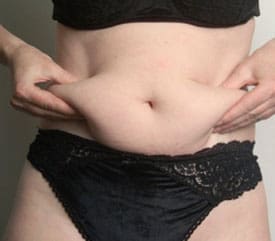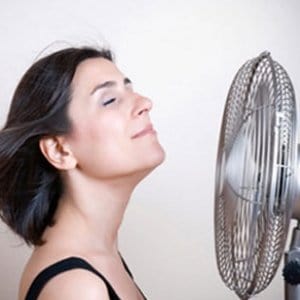Managing Menopause ~What to Eat Along The Way
This week is National Women’s Health week, and I although write a lot about various women’s health issues, but I’ve never done anything on menopause, mainly because I’ve been afraid it might not immediately apply to all of my readers. Regardless of your age though, it’s one of those things all women will eventually have in common, and that men will never know the joys of. I know. Lucky us!
While it’s always a good idea to eat healthy, for women who are peri and post menopause, a healthy diet becomes even more essential. Most women are concerned about hot flashes and of course weight gain, both of which are unfortunately all too common, but your should also know, the risk for diseases like osteoporosis, breast cancer and heart disease also increases after menopause. The good news is that there are steps you can take to (hopefully) glide through menopause, and reduce your risk of all of these things.
Where did that spare tire come from?
Most women assume that weight gain is directly related to menopause and the hormonal changes that accompany it, but surprisingly, research doesn’t support that. The weight that almost all of us will gain during out 40s and 50 is most likely due to a natural slowdown in metabolism combined with less activity. Hormones do play a role however, in how a woman’s weight is distributed, and anyone who’s been there is familiar with the “spare tire” or what I call “Meno-pot” that often seems to pop up out of nowhere. It’s the change in hormones that are responsible for a redistribution of a woman’s weight, favoring an overall decrease in muscle and an increase in body fat - especially in the abdomen. It’s that increase in deep abdominal fat that suddenly ups our risk for chronic diseases.

If you notice that you’re gaining weight more easily, take a good look at your diet. Figure out how many calories you really need each day. Just 100 calories a day over what your body requires will result in a ten-pound weight gain each year. Could it be time to cut out that nightly glass of wine or dessert? It can also be helpful to increase your protein to about 25 grams with each meal. This can slow down the loss of muscle. Try to meet part of your protein need with fatty fish like salmon. It’s a rich source of omega-3 fats, which might help reduce the risk of breast cancer and heart disease
In addition, make it a point to move more, not less. Increase your activity to about 45 minutes of fast walking, running or biking at least five times each week, with two to three days of strength training as well. This helps to offset the slowdown in metabolism, by burning an additional few hundred calories, and of course strength training helps to maintain muscle mass.
Where did my bones go?
Another major concern for postmenopausal women is bone loss, which can lead to osteoporosis. Women can lose up to twenty percent of bone density in the first few years after menopause. Women who are thin, small boned and fair skinned are at the greatest risk for osteoporosis. The best strategy here is to go into menopause with “a full tank”, meaning make sure you get your recommended amount of calcium and vitamin D, combined with regular, weight bearing exercise (like walking, running, and weight lifting) well before menopause. For women after 50, the recommended calcium intake is 1,200 mg per day, which is the equivalent of 4 -8 ounce glasses of milk or yogurt each day. That’s a lot for most of us, but the good news is that in addition to calcium, those dairy foods also provide the extra protein many of us need.

Is it hot in here…?
Hot flashes are probably the most common concern across the board for both anyone going through menopause, and unfortunately, they can occur for several years. Hot flashes during the day are bothersome, and at night they can significantly disrupt sleep. While there isn’t a proven way to prevent them, you’re more likely to have disruptive hot flashes if you’re overweight, don’t exercise, smoke, and drink alcohol. There’s some evidence also, that stress plays a part in the frequency and severity of hot flashes, so try to focus on stress reducing moves if you need to. Increase your exercise, try some yoga, and follow rules of the de-stress diet.

If you need some help putting all of these recommendations together, feel free to contact me to ask a question, or arrange a virtual consult! And remember ladies - you're not alone! Happy Women's Health Week 🙂
Eat well!
This post appeared first on Craving Something Healthy
